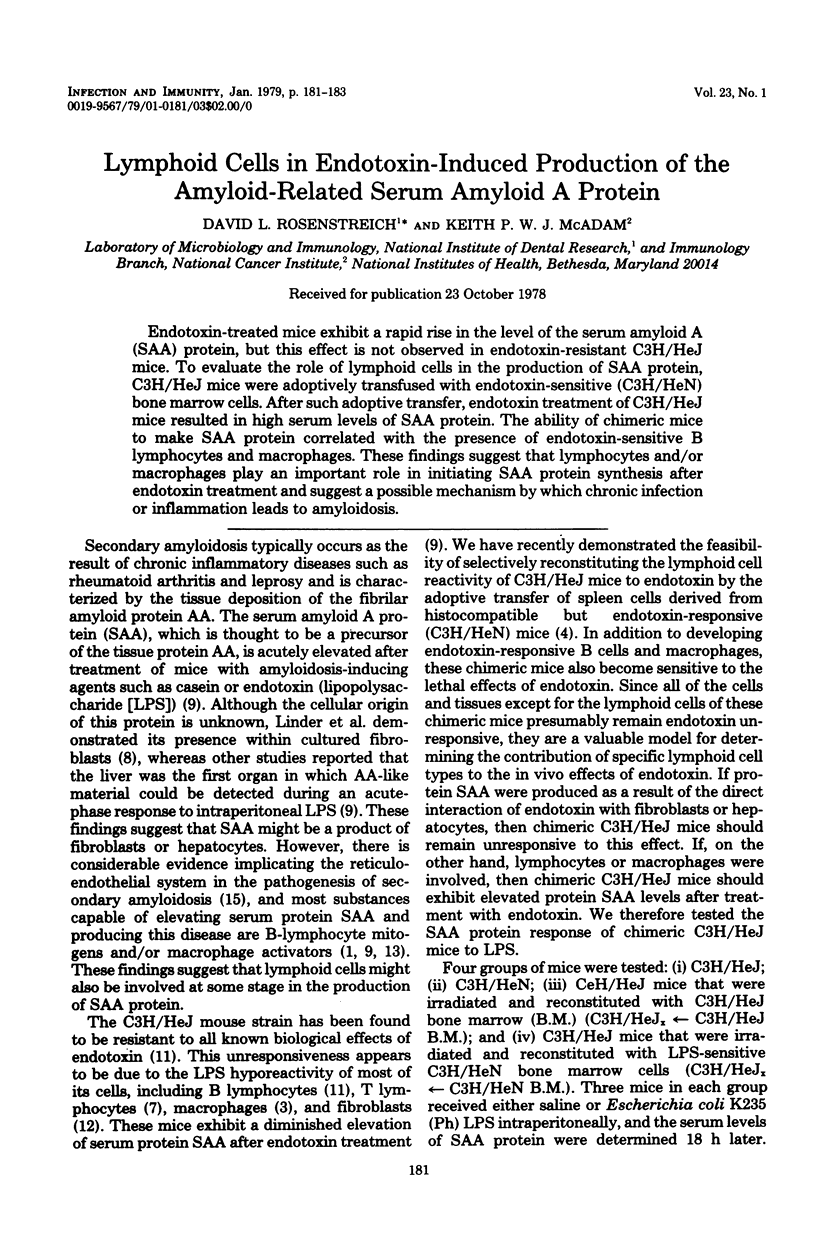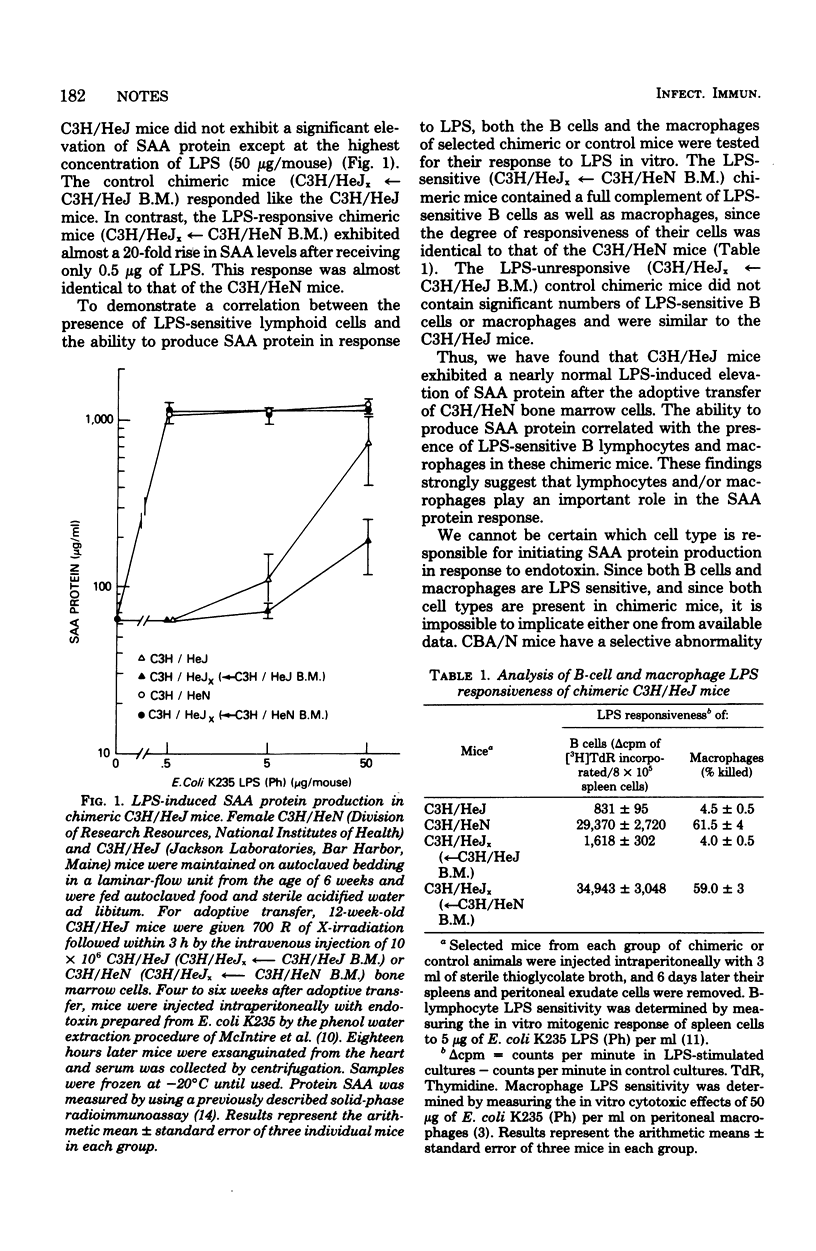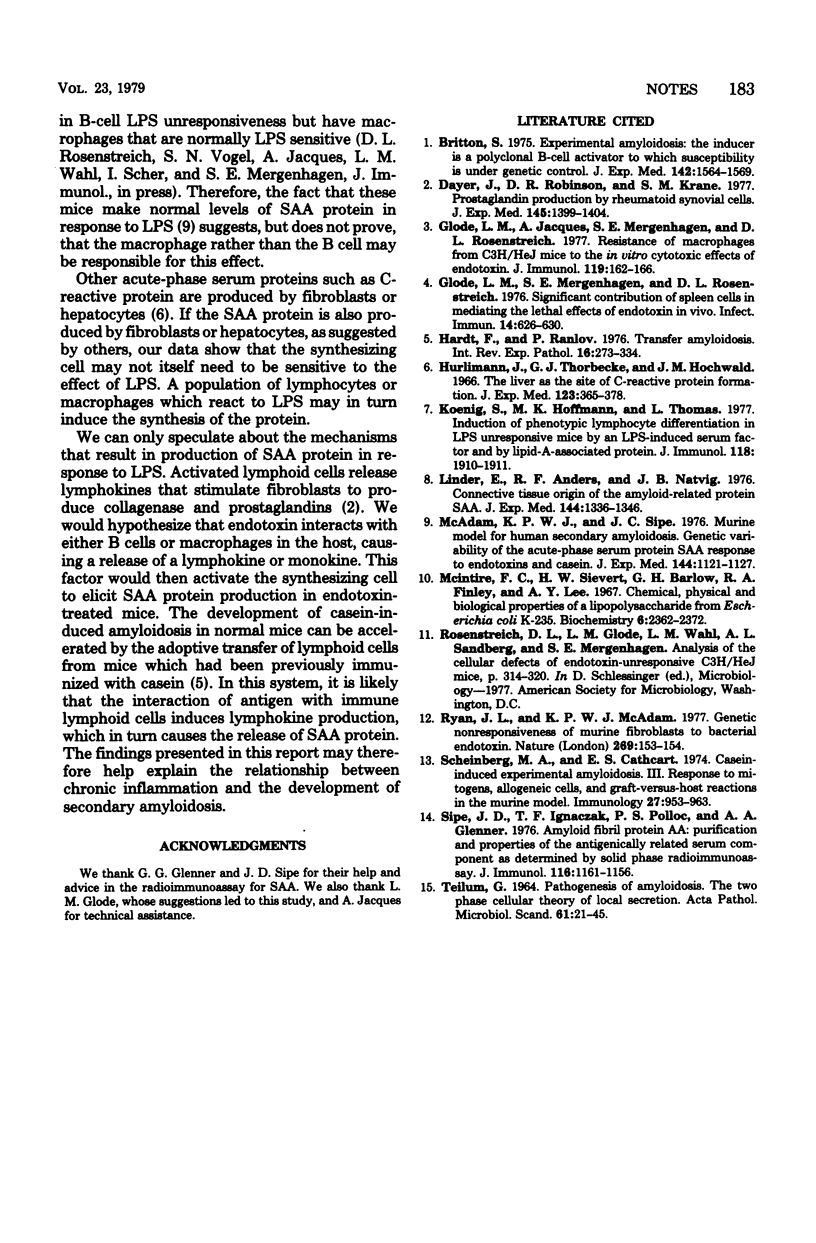Abstract
Endotoxin-treated mice exhibit a rapid rise in the level of the serum amyloid A (SAA) protein, but this effect is not observed in endotoxin-resistant C3H/HeJ mice. To evaluate the role of lymphoid cells in the production of SAA protein, C3H/HeJ mice were adoptively transfused with endotoxin-sensitive (C3H/HeN) bone marrow cells. After such adoptive transfer, endotoxin treatment of C3H/HeJ mice resulted in high serum levels of SAA protein. The ability of chimeric mice to make SAA protein correlated with the presence of endotoxin-sensitive B lymphocytes and macrophages. These findings suggest that lymphocytes and/or macrophages play an important role in initiating SAA protein synthesis after endotoxin treatment and suggest a possible mechanism by which chronic infection or inflammation leads to amyloidosis.
Full text
PDF


Selected References
These references are in PubMed. This may not be the complete list of references from this article.
- Britton S. Experimental amyloidosis: the inducer is a polyclonal B-cell activator to which susceptibility is under genetic control. J Exp Med. 1975 Dec 1;142(6):1564–1569. doi: 10.1084/jem.142.6.1564. [DOI] [PMC free article] [PubMed] [Google Scholar]
- Dayer J. M., Robinson D. R., Krane S. M. Prostaglandin production by rheumatoid synovial cells: stimulation by a factor from human mononuclear Cells. J Exp Med. 1977 May 1;145(5):1399–1404. doi: 10.1084/jem.145.5.1399. [DOI] [PMC free article] [PubMed] [Google Scholar]
- Glode L. M., Jacques A., Mergenhagen S. E., Rosenstreich D. L. Resistance of macrophages from C3H/HeJ mice to the in vitro cytotoxic effects of endotoxin. J Immunol. 1977 Jul;119(1):162–166. [PubMed] [Google Scholar]
- Glode L. M., Mergenhagen S. E., Rosenstreich D. L. Significant contribution of spleen cells in mediating the lethal effects of endotoxin in vivo. Infect Immun. 1976 Sep;14(3):626–630. doi: 10.1128/iai.14.3.626-630.1976. [DOI] [PMC free article] [PubMed] [Google Scholar]
- Hardt F., Ranlov P. Transfer amyloidosis. Int Rev Exp Pathol. 1976;16:273–334. [PubMed] [Google Scholar]
- Hurlimann J., Thorbecke G. J., Hochwald G. M. The liver as the site of C-reactive protein formation. J Exp Med. 1966 Feb 1;123(2):365–378. doi: 10.1084/jem.123.2.365. [DOI] [PMC free article] [PubMed] [Google Scholar]
- Koenig S., Hoffmann M. K., Thomas L. Induction of phenotypic lymphocyte differentiation in LPS unresponsive mice by an LPS-induced serum factor and by lipid A-associated protein. J Immunol. 1977 May;118(5):1910–1911. [PubMed] [Google Scholar]
- Linder E., Anders R. F., Natvig J. B. Connective tissue origin of the amyloid-related protein SAA. J Exp Med. 1976 Nov 2;144(5):1336–1346. doi: 10.1084/jem.144.5.1336. [DOI] [PMC free article] [PubMed] [Google Scholar]
- McAdam K. P., Sipe J. D. Murine model for human secondary amyloidosis: genetic variability of the acute-phase serum protein SAA response to endotoxins and casein. J Exp Med. 1976 Oct 1;144(4):1121–1127. doi: 10.1084/jem.144.4.1121. [DOI] [PMC free article] [PubMed] [Google Scholar]
- McIntire F. C., Sievert H. W., Barlow G. H., Finley R. A., Lee A. Y. Chemical, physical, biological properties of a lipopolysaccharide from Escherichia coli K-235. Biochemistry. 1967 Aug;6(8):2363–2372. doi: 10.1021/bi00860a011. [DOI] [PubMed] [Google Scholar]
- Ryan J. L., McAdam K. P. Genetic non-responsiveness of murine fibroblasts to bacterial endotoxin. Nature. 1977 Sep 8;269(5624):153–155. doi: 10.1038/269153a0. [DOI] [PubMed] [Google Scholar]
- Scheinberg M. A., Cathcart E. S. Casein-induced experimental amyloidosis. III. Response to mitogens, allogeneic cells, and graft-versus-host reactions in the murine model. Immunology. 1974 Nov;27(5):953–963. [PMC free article] [PubMed] [Google Scholar]
- Sipe J. D., Ignaczak T. F., Pollock P. S., Glenner G. G. Amyloid fibril protein AA: purification and properties of the antigenically related serum component as determined by solid phase radioimmunoassay. J Immunol. 1976 Apr;116(4):1151–1156. [PubMed] [Google Scholar]
- TEILUM G. PATHOGENESIS OF AMYLOIDOSIS. Acta Pathol Microbiol Scand. 1964;61:21–45. doi: 10.1111/apm.1964.61.1.21. [DOI] [PubMed] [Google Scholar]


